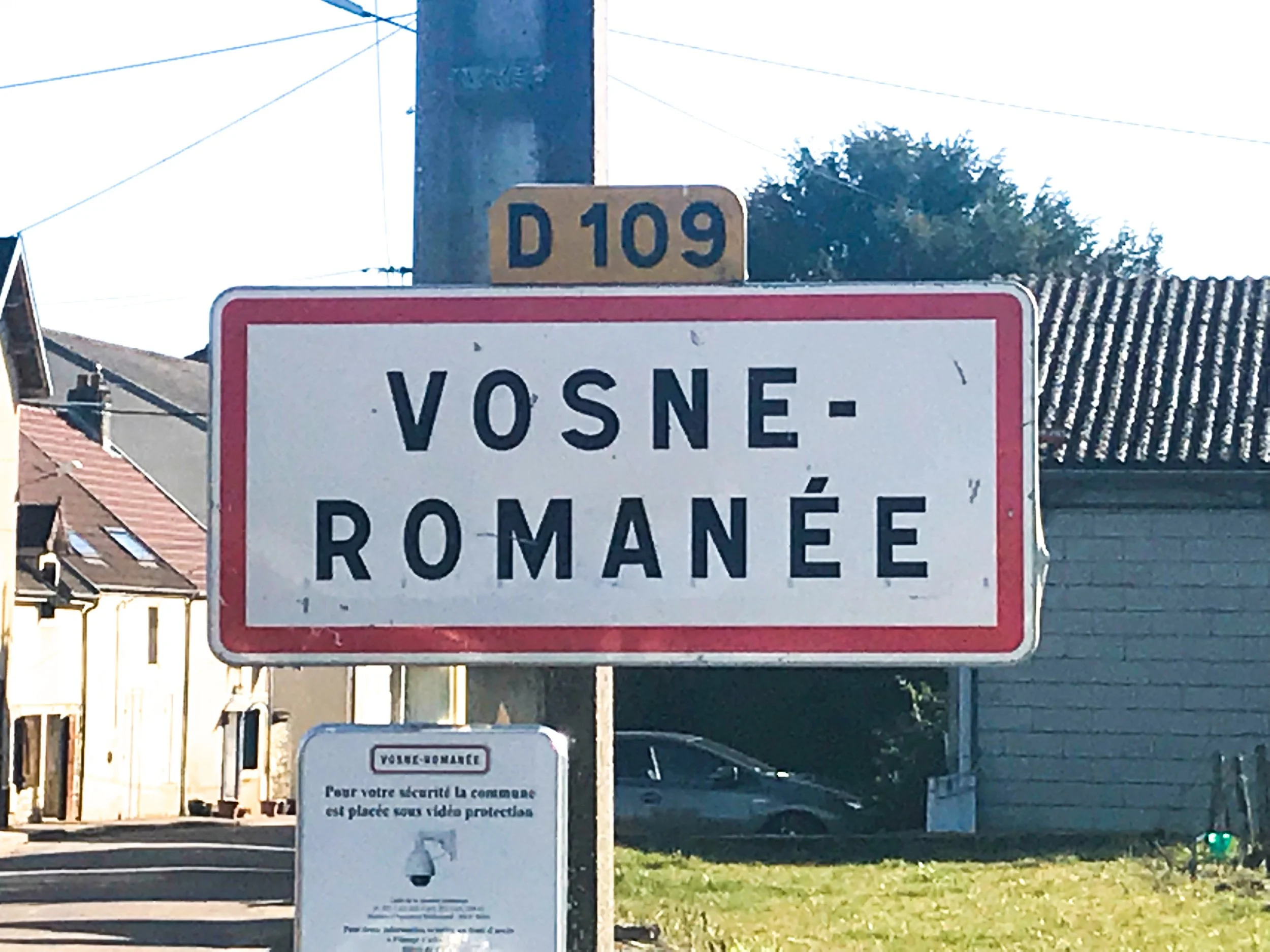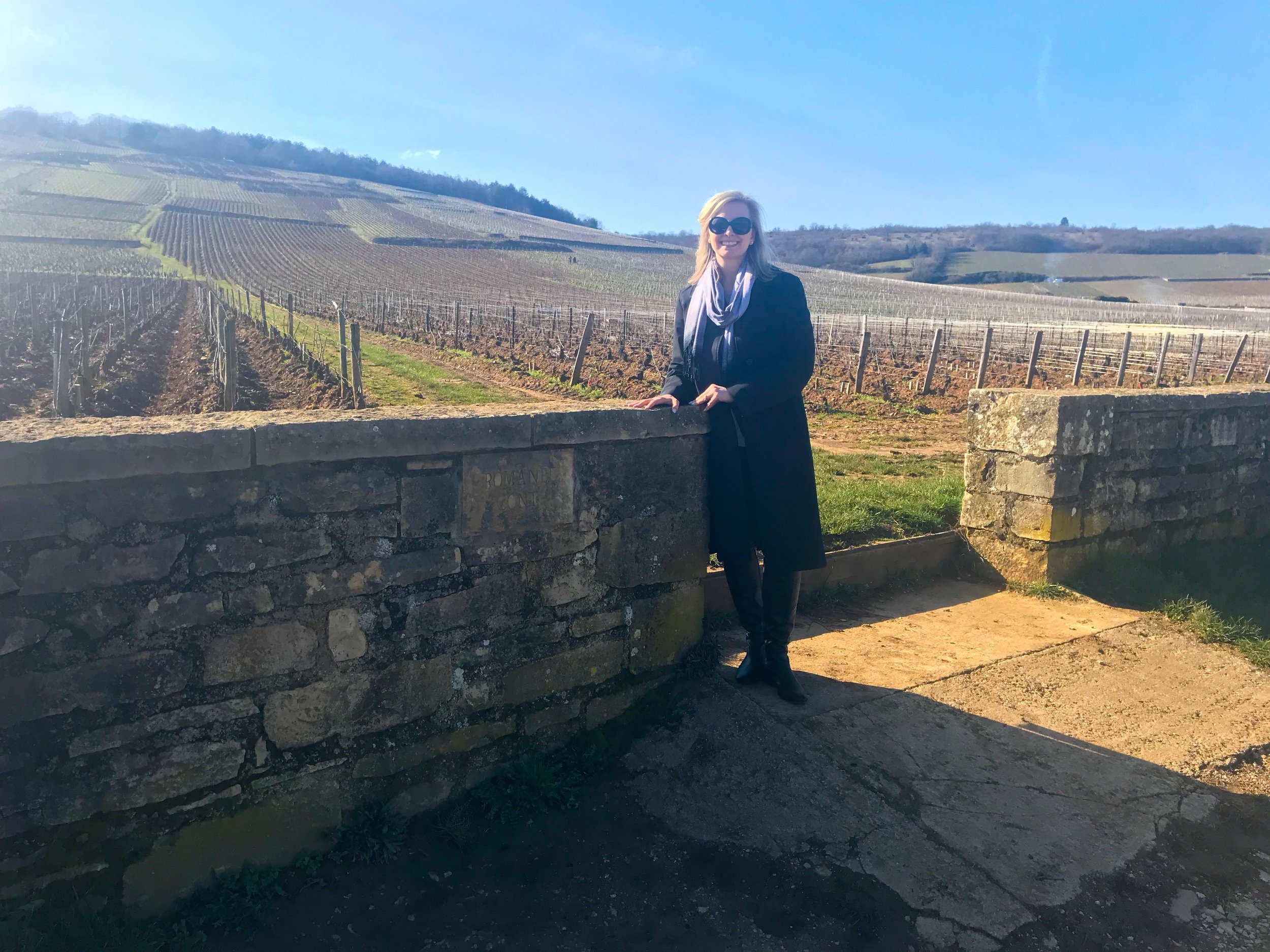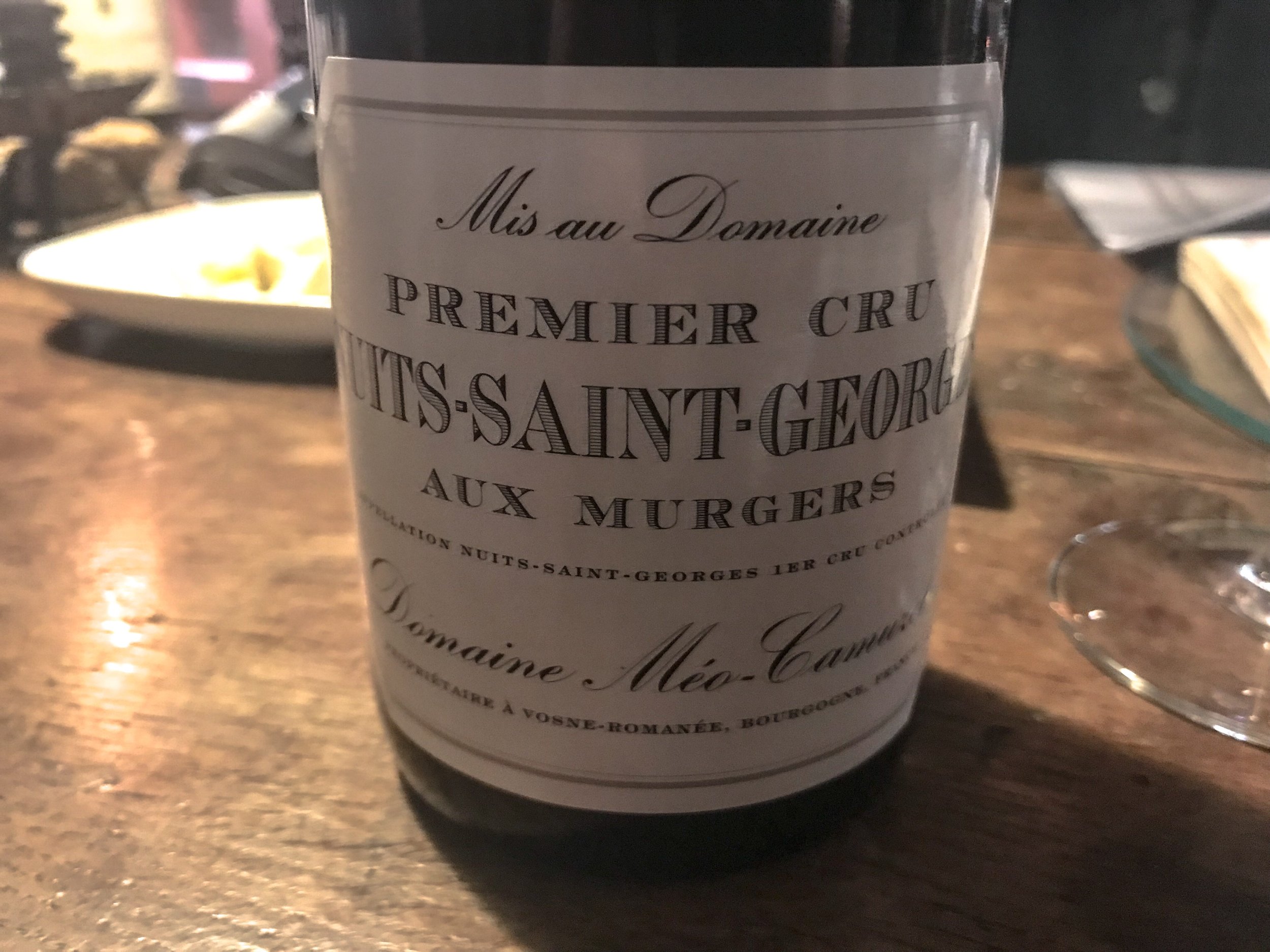An Epic Wine Tour of Burgundy
Carol Wolniakowski
A Grand Tour of Burgundy - Part One
How does tasting thousands of different wines over a span of five days sound?
I'm listening.....
And what if that tasting takes place in arguably the world's preeminent wine region?
Sold!!
I am excited to share my fabulous experience in Burgundy that will give you a great overview of the region. A few months back, I received an invitation to the Grand Jours de Bourgogne event in Burgundy, France. This trade event takes place every two years and showcases wines from every corner of Burgundy. It is an incredible opportunity to not just taste wines from various appellations and multiple vintages, but to meet the people behind the labels. The owners and winemakers personally attend the event and are eager to describe the wines, the terroir and their winemaking process. There is no substitute to meeting the people actually growing the grapes and making the wine - people whose families have been stewards of the land for generations. These conversations truly bring the wines to life.
The Grand Days of Burgundy - Key Takeaways
Burgundy has a storied wine history that dates back to the Romans, as early as the third century B.C.
Catholic monks had a significant influence on winemaking in Burgundy, and the church owned majority of the vineyards. After the French Revolution, the vineyards were confiscated and distributed among the people. Due to inheritance laws, vineyards have been divided and sub-divided in small parcels with ownership being shared by relatives. One vineyard can have multiple owners, and some owners may own just a few rows of vines!
Burgundy is comprised of many small, family-owned domaines. Unlike Bordeaux, there are not many grand chateaux, and when visiting you are likely to meet with the owner or winemaker directly. Due to their small size, many wineries are not well equipped for visitors - therefore, advance appointments are a must.
There are three types of producers: Domaines, Negociants and Cooperatives. Domaines are wineries that own their own land, while negociants purchase wine or grapes from growers. Some producers are a combination, where they own some land but also source grapes from elsewhere. Cooperatives are comprised of member winegrowers who share their grapes (or sometimes must) and pool resources to produce and market their wines.
Burgundy is famous for two wines: Pinot Noir and Chardonnay. More than 80% of Burgundy is planted to these two grapes, which thrive in the region.
The Burgundians have incredible focus on terroir and soil. Literally every vintner made it a point to describe the tapestry of terroir and how it impacted that year’s wine. Soils from one parcel to the next can vary greatly in their composition, which will impact the wine differently.
Tasting wines from various appellations side by side is a fantastic way to train your palate to detect the nuances in flavor and texture.
Burgundy wines are classified by the quality of the vineyard (no surprise given Burgundy’s focus on terroir). Each vineyard is given a designation as a Regional appellation, Communal appellation, Premier Cru or Grand Cru.
The family pride, passion and enthusiasm of Burgundians is absolutely infectious.
It would be impossible to summarize the entirety of this massive event. Walking into a room with hundreds of vintners is quite overwhelming. But I was up to the challenge, the first of which was to refine my spitting. There is no way you can drink every pour - all day, for five days - so swirling a taste in your mouth and then spitting it out is the norm. Barrel-like spittoons are placed along each row. After so much practice, I can now confidently add this skill to my resume.
Although this event focused on Burgundian wines, we also had the chance to sample a variety of Burgundian foods at a lunch “buffet” each day. I use that term loosely as these were no ordinary buffets. Paté, duck confit, aged cheeses and poached quail eggs - it tasted more like a Michelin-starred restaurant than a conference lunch. My personal favorite: Gougères. Basically cheesy, airy pastry balls of perfection. What a fantastic way to showcase the many talents of Burgundian chefs.
Each day profiled different regions, and we traveled to each region for the tastings. So this grand tour of Bourgogne truly was a journey of the Burgundian landscape in addition to the wines. Physically visiting each appellation was an incredible experience and really allowed the intricacies of Burgundian wine and culture to shine. In Part Two, I will provide a brief summary of each day. Feel free to grab a glass of Chablis, where the Grand Tour begins.
A Grand Tour of Burgundy - Part Two
Do you think you can taste hundreds of wines over five days? I attended the Grand Jours de Bourgogne to find out! This trade event allows wine buyers from around the world the chance to taste a diverse range of Burgundian wines while meeting the owners and winemakers. Gorgeous scenery, historic sites, incredible food and world class wines equal an experience of a lifetime.
Day One - Chablis
We kicked off the event with a nosedive into the world’s most popular white wine: Chardonnay. Burgundy’s largest vineyard, Chablis, is also the northernmost part of the appellation. In fact, it is so far north that it is actually closer to Champagne than the rest of Burgundy! The climate and soils are similar to Champagne, which is reflected in its wines. The Chardonnay made here is fresh, racey and lighter-bodied thanks to the cooler climate. Without a lot of heat, the grapes do not ripen as much and retain a good amount of acidity.
The wines of Chablis are light yellow, almost yellow-green in color. The aromas of green apple, white flowers, and citrus jump out of the glass with notes of flint or stone. They do not have as much influence of oak as other white Burgundies, so you will not find many vanilla or buttery flavors in Chablis. They are mostly fermented in stainless steel tanks to preserve the minerality and fruit characteristics. Many critics believe that Chablis is the purest form of Chardonnay, given the lack of alteration by oak barrels. It certainly is one of the most distinctive representations of Chardonnay and everyone can agree: there is only one Chablis.
Day Two - Côte de Beaune
Côte de Beaune, literally the hills of Beaune, have much more than picturesque rolling hills, but the landscape showcases equally dramatic steep cliffs. Vineyards planted on these cliffs give grapes maximum sun exposure that enhances the depth and quality of the grape. In the quaint town of Beaune, over 200 domaines from Côte de Beaune were represented at the Palais des Congrés on day two of the event. The estate owners were eager to describe each of their specific bottlings, which surprisingly can differ quite a bit despite originating from the same grape in the same region. In Burgundy, one estate may own small parcels from different villages, representing a diverse expression of the grapes. We tasted red and white wines from over 15 appellations including reds from Pommard and Volnay, where we learned that although the appellations are side by side, Pommard tends to be more muscular while Volnay more finessed.
Some of the most expensive white wines in the world come from Montrachet and at this point, I hardly felt worthy to be in the room! There is a certain aristocracy to these wines - almost regal in nature with their golden color and firm body. The bouquet is intense and complex, filled with butter, honey, flowers, dried fruits, vanilla and bread (think buttery croissant). The standout for me was the Domaine Faiveley 2016 Bienvenues-Batard-Montrachet Grand Cru blanc. This wine was so delicate and layered with beautiful notes that I felt I could literally dance across the floor. Wow.
Next we traveled to the Leproserie de Meursault, which literally means “Leper House.” This building has incredible history. It was founded as a hospital by the Duke of Burgundy in the 12th century and was a medical home for the poor and sick, particularly those with leprosy. The historic structure was beautifully restored and now stands as an impressive welcome to the village of Meursault.
The incomparable Chardonnays of the Meursault appellation were featured at the Leproserie by nearly 40 exhibitors. The 2015 vintage was an especially good year for white Burgundy (lucky me!). What is so utterly fascinating is the focus on individual parcels, or “climats,” and how the terroir of each is distinct. The winemakers explained the exact location of each climat on a detailed map. Their faces lit up as they enthusiastically described how the increased proportion of limestone in this area compares to the next area with more clay. Just a subtle shift of sun exposure also can greatly influence the grapes. I do not think there is any area in the world as focused on terrior. How is it possible to taste wines from over 40 domaines in one room that have such distinct flavor and texture - despite all being 100% Chardonnay?? Incredible experience.
The final tasting of the day starred the phenomenal wines of Corton. Corton is unique in that it is the only appellation to have Grand Cru status for both red and white wines. Legend says that Charlemagne himself insisted on planting Chardonnay on the hill to avoid staining his white beard! I had the chance to take a drive on the famous hill of Corton - fascinating to see how the angle of the sunlight affects each patch of vineyard as you round the hillside.
Day Three - Maconnais
The wines from Maconnais were featured the next day. Heading south from the Côte de Beaune, the Maconnais has a gorgeous landscape with rolling hills and steep cliffs. Maconnais features mostly Chardonnay, notably the wines from Pouilly-Fuisse. I love the wines from Maconnais - Chardonnays that are light and refreshing. The wines are really alive and typically don’t see much oak, if any. Some Pinot Noir is planted here as well as Gamay, which is more associated with Beaujolais. These red grapes are often made into rosé, one of the few Burgundian appellations to do so.
Catholic monks played an important role in the Maconnais, and their legacy in viticulture remains to this day. Over 1,000 Benedictine monks resided at the Abbey of Cluny, founded in 909, and owned large areas of vineyards. The monks made wine for the church and over time developed the art of wine growing. They honed their skills and noted that some grapes thrived in various areas of the vineyard. They began to divide the vineyards into small climats by soil composition and drainage, sun exposure and elevation. Their viticulture methods improved over time and by the 15th century, the quality of their wines was recognized across Europe.
Did you know that Burgundy also makes bubbly? After tasting through wines from the Maconnais, I had the chance to sample sparkling wines from the region. Cremánt de Bourgogne can be made from a number of different grapes and is produced in the methode champenoise, the same method as is mandated in Champagne, France. Cremánt is distinct from Champagne in that it highlights the unique Burgundian terroir, yet certainly can hold the same level of quality. Some Cremánt de Bourgogne can rival Champagne (gasp!) so check them out!
Day Four - Côte Chalonnaise
After a peaceful drive through the rolling hills of the Côte Chalonnaise, we headed into day four of our tastings. The Côte Chalonnaise is located in the southern part of Burgundy where hot summers and dry autumns make for easily ripening grapes. This region is often thought of as having some of the best values in Burgundy. Their wines are lighter, easy drinking and do not require extensive aging as some of their neighbors do. Rully is one of the villages in this area and contains 23 Premier Cru climats. Rully produces both white and red wines and has been known as a key area for Cremant de Bourgogne production since the 19th century.
In addition to Chardonnay and Pinot Noir, the Côte Chalonnaise also grows a more obscure grape: Aligoté. The town of Bouzeron creates these light and fresh white wines that are more similar to Pinot Gris than Chardonnay. With its delicate floral and fruit characteristics, it makes a great summer wine. Aligoté also often serves as the base of the classic aperitif the French Kir. Add a bit of creme de cassis to a glass and you will not be disappointed!
Day Five - Côte du Nuits
The final day of the Grand Jours de Bourgogne featured the wines of the Côte du Nuits (the best for last??). The Côte du Nuits is home to some of the most famous and expensive red wines in the world. It is extends from Dijon to just south of Nuits-Saint-Georges. The grapes are planted on the east and southeast slopes to take advantage of maximum sunlight exposure (notice a theme for the Grand Cru vineyards?). As I stood on the hill overlooking each plot of land, side by side, one Grand Cru vineyard after the next, I really was surprised at how small some of these renowned appellations are! I can only imagine the value of a single grape.
The village of Gevrey-Chambertin was the first visit of our day - what a way to start the morning! Gevrey-Chambertin is home to nine Grand Cru vineyards, but all of their vineyards are held in high regard. The wines from this village are the boldest, most full-bodied in all of Burgundy. Because of their firm structure, these wines have incredible aging potential. I had the extraordinary pleasure of tasting four wines from Domaine Pierre Damoy. Pierre Damoy took over from his uncle, Jacques Damoy, in 1992 and the domaine has been in the family for five generations. Pierre was on hand to describe the wines with his son by his side - perhaps the 6th generation owner? The estate owns over 10.6 hectares (about 26 acres) of vineyards, and eight of the ten are located in the most-esteemed Grand Cru in Burgundy. Incredible!
The wines of Fixin also were showcased. These wines can be quite tannic in their youth, but with some age are rich and full with a delicate texture despite its robust structure. Domaine Pierre Gelin is the leading wine producer in this small village, with vineyards in five of Fixin’s eight Premier Crus. In fact, this domaine is the sole owner of one of the very best Fixin Premier Crus, the Clos Napoléon. Piers Gelin founded this estate in 1925 and his grandson, Pierre-Emmanuel, is now at the helm.
The appellation of Marsannay is distinct in producing white and rosé wines in addition to red. Domaine Charles Audoin is an example of an estate offering all three. I was fortunate to taste their rosé, blanc and rouge from Marsannay, as well as their reds from Fixin and Gevrey-Chambertin. Cyril Audoin is the fifth generation winemaker of this estate that has been producing wine since 1850! Cyril and his wife Brittany, an American expat, often meet visitors at their property in Marsannay-La-Côte. Marsannay is often said to offer the best value in the Côtes de Nuits.
After departing Gevery-Chambertin, we had a scenic ride to the Clos de Vougeot. The Clos de Vougeot is a Grand Cru appellation with a stately chateau overlooking its vineyards. It is quite an impressive sight! The Clos de Vougeot is a Burgundian icon, with its vineyards intact within the clos, or walls, built 5 centuries ago. The estate was founded by monks around the year 1110 and it has held Grand Cru status since 1937. The chateau is open to the public and is a really interesting visit. You can attend a guided tour or simply wander on your own. The cellar and vat house showcase tools used to make wine, the highlight being a pair of huge wine presses from the 12th and 14th centuries. Although there is no wine to taste, the architecture, lovely courtyard and gift boutique make for a pleasant detour from wine touring.
For the finale of the Grand Jours de Bourgogne,we were treated to a celebratory buffet and tastings at the lovely Chateau de Gilly in Gilly-les-Citeaux. This chateau is the former residence of Cistercian monks and now stands as a lovely hotel and restaurant in the heart of Burgundian wine country. It has preserved its authentic 14th and 16th centuries character, complete with moats and French gardens. The tastings and buffet were held inside the stone walls with huge vaulted ceilings while we mingled in the courtyard on a sunny spring day. A perfect ending to an extraordinary week!
The Grand Jours de Bourgogne was a truly unique opportunity to tour each appellation of Burgundy and taste the diverse styles of Chardonnay and Pinot Noir. I cannot stress how fascinating this region is. Anyone who appreciates wine needs to add this to the bucket list!
Incidentally, although Burgundy may be the ultimate wine-geek holiday, its food, culture and history make it an interesting destination for any traveler. If you have some interest in the area or if we can help plan your next amazing adventure, send us a note at info@cuveewinetravel.com. Or simply join our community of people who love food, wine and travel below. Sante!













































